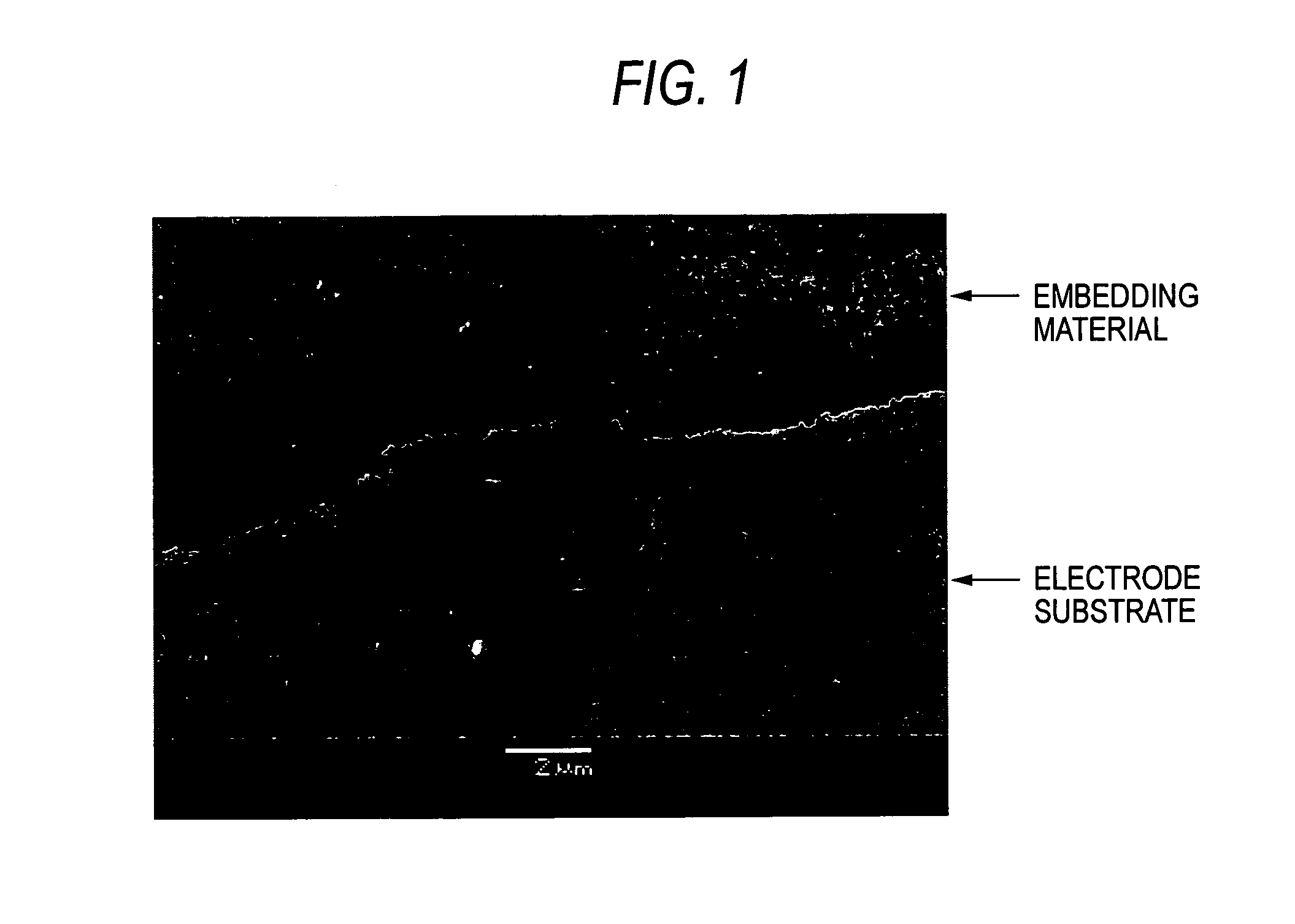Conductive diamond electrode and process for producing the same
a diamond electrode and diamond technology, applied in the field of conductive diamond electrodes, can solve the problems that the practical level of electrolysis has not been achieved by the conventional method, and achieve the effect of excellent durability
- Summary
- Abstract
- Description
- Claims
- Application Information
AI Technical Summary
Benefits of technology
Problems solved by technology
Method used
Image
Examples
example 1
[0068]Alumina particles of #60 were sprayed to both surfaces of a metal niobium plate having a size of 30 mm×30 mm and a thickness of 2 mm by compressed air of 0.7 MPa to conduct blasting. The plate was subjected to ultrasonic washing at 28 kHz and 300 W for 15 minutes in pure water, and then dried. The plate was immediately inserted in a vacuum furnace. While maintaining the vacuum of 10−3 to 10−5 Pa, the temperature in the furnace was elevated to 750° C. at a temperature rising rate of 4° C. / min. The plate was maintained at the temperature for 10 hours (Example 1-1), and then cooled to room temperature at a rate of 4° C. / min to prepare a substrate sample. Similarly, substrate samples were prepared such that the temperature elevated to 1,090° C. and then maintained for 1 hour (Example 1-2), and the temperature was elevated to 1,300° C. and then maintained for 1 minute (Example 1-3).
[0069]Each of the substrate samples was subjected to a seeding treatment in the following manner.
[007...
example 2
[0078]Alumina particles of #60 were sprayed to both surfaces of a metal niobium plate (substrate sample) having a size of 30 mm×30 mm and a thickness of 2 mm by compressed air of 0.7 MNa to conduct blasting.
[0079]The substrate plate was dipped in an aqueous solution containing 5% of hydrofluoric acid (HF) and 2% of hydrogen peroxide (H2O2) at 60° C. for 25 minutes. The plate was then subjected to ultrasonic washing at 28 kHz and 300 W for 15 minutes in pure water, and dried. In EPMA analysis of the surface separated performed, blast particles and other contaminants were not observed. The state was observed that clearly square unevenness formed by blasting was slightly round.
[0080]The sample substrate thus treated was immediately placed in a vacuum furnace. While maintaining vacuum of 10−3 to 10−5 Pa, the temperature in the furnace was elevated to 1,090° C. at a rate of 4° C. / min, this temperature was maintained for 1 hour, and the temperature was down to room temperature at a rate o...
PUM
| Property | Measurement | Unit |
|---|---|---|
| temperature | aaaaa | aaaaa |
| temperature | aaaaa | aaaaa |
| temperature | aaaaa | aaaaa |
Abstract
Description
Claims
Application Information
 Login to View More
Login to View More - R&D
- Intellectual Property
- Life Sciences
- Materials
- Tech Scout
- Unparalleled Data Quality
- Higher Quality Content
- 60% Fewer Hallucinations
Browse by: Latest US Patents, China's latest patents, Technical Efficacy Thesaurus, Application Domain, Technology Topic, Popular Technical Reports.
© 2025 PatSnap. All rights reserved.Legal|Privacy policy|Modern Slavery Act Transparency Statement|Sitemap|About US| Contact US: help@patsnap.com



